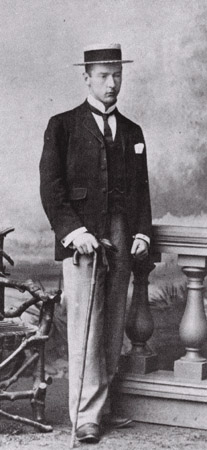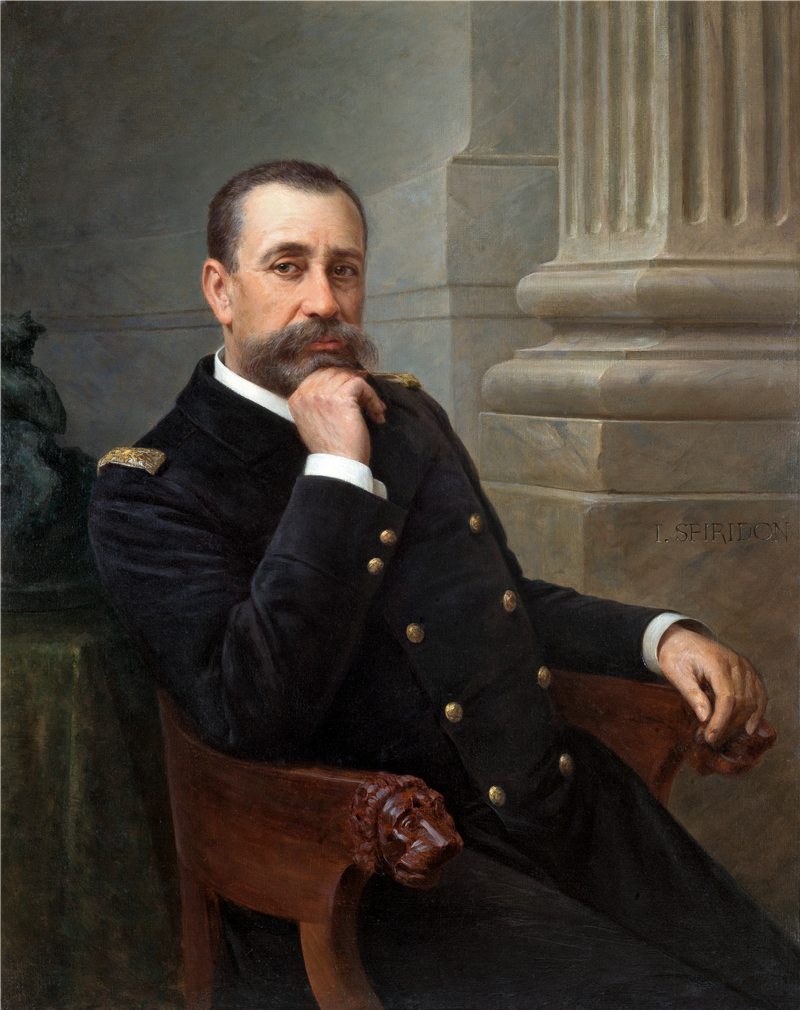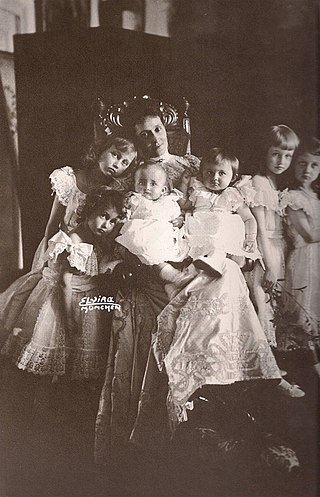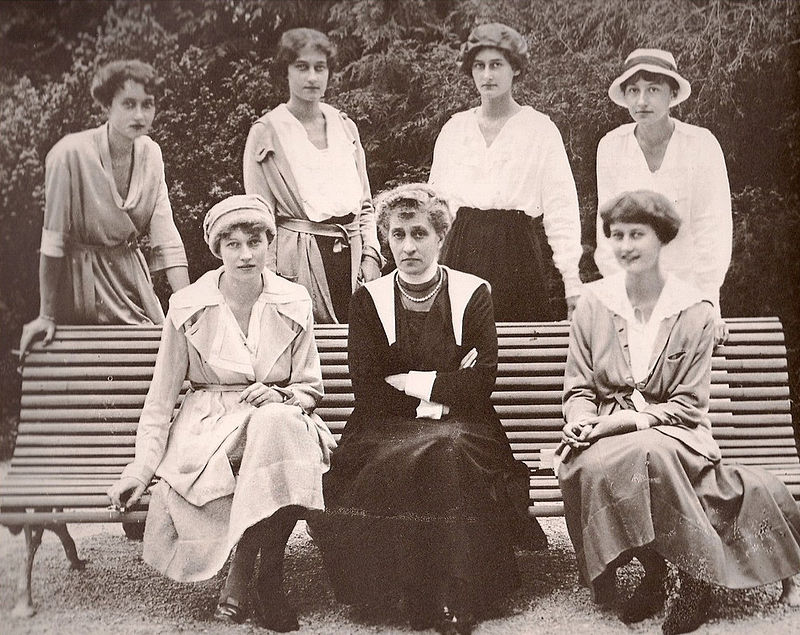by Susan Flantzer
- James Ogilvy-Grant, 11th Earl of Seafield
- Timeline: November 1, 1915 – November 30, 1915
- A Note about German Titles
- Royals/Nobles/Peers/Sons of Peers Who Died in Action

James Ogilvy-Grant, 11th Earl of Seafield; Photo Credit – http://www.lijssenthoek.be/en/address/2749/-james-alias-earl-of-seafield-ogilvie-grant.html
James Ogilvy-Grant, 11th Earl of Seafield was one of the 24 British peers who died in World War I. The Earl of Seafield is a title in the Peerage of Scotland, created in 1701 for James Ogilvy, who in 1711 succeeded his father as 4th Earl of Findlater. The first Earl of Seafield’s branch of the Ogilvy family descended from the 15th century Sir John Ogilvy, whose brother Sir Walter Ogilvy was the ancestor of the Earls of Airlie. The name Ogilvy may sound familiar to those acquainted with the British royal family. The Right Honorable Sir Angus Ogilvy, the late husband of Princess Alexandra of Kent, Queen Elizabeth II’s first cousin, was the second son of the 12th Earl of Airlie.
James’ father, Francis William Ogilvy-Grant (10th Earl), was the son of The Honorable James Ogilvy-Grant (9th Earl), the fourth son of Francis William Ogilvy-Grant, 6th Earl of Seafield. In 1870, James’ father Francis (10th Earl) went to New Zealand where he bought a farm which soon failed. For about ten years, Francis (10th Earl) had a hard life as a laborer. In 1874, Francis (10th Earl) married his first cousin Ann Trevor Corry Evans, who was called by her nickname Nina, and they made their home in Oamaru, New Zealand. It was in Oamaru, on April 18, 1876, that James (11th Earl), the first of Francis (10th Earl) and Nina’s seven children was born. James (11th Earl) was educated in New Zealand at Warwick House Preparatory School in Christchurch, New Zealand; Christ’s College in Christchurch, New Zealand and Lincoln University in Lincoln, New Zealand.
In 1884, The Honorable James Ogilvy-Grant, the fourth son of Francis William Ogilvy-Grant, 6th Earl of Seafield succeeded his nephew as 9th Earl of Seafield. When the 9th Earl died in June of 1888, his son, James’ father, became the 10th Earl of Seafield and James (11th Earl) now used the courtesy title Viscount Reidhaven as the heir apparent to the Earl of Seafield title. Unfortunately, the 10th Earl lived for only six more months, dying on December 3, 1888. His son James then became the 11th Earl of Seafield and Chief of the Clan Grant at the age of 12.

Photo Credit – Wikipedia
On June 22, 1898 at St. Barnabas Church in Fendalton, Christchurch, New Zealand, 22 year old James Ogilvy-Grant, 11th Earl of Seafield married 22 year old Mary Elizabeth Nina Townend, who was called Nina like James’ mother. Their only child, a daughter, Nina Caroline Ogilvy-Grant was born on April 17, 1906.
In 1903, when the third wife of James’ grandfather the 9th Earl of Seafield died, James and his wife Nina took up residence at the ancestral homes in Scotland: Castle Grant in Grantown-on-Spey, Morayshire and Cullen House in Moray, Banffshire. James, 11th Earl of Seafield and Nina, Countess of Seafield became very popular and highly regarded. James devoted much time in activities that would benefit his tenants and gained a reputation for his knowledge of estate problems. He took a special interest in afforestation, the establishment of a forest or stand of trees in an area where there was no forest.

Photo Credit – http://www.lijssenthoek.be/en/address/2749/-james-alias-earl-of-seafield-ogilvie-grant.html
During World War I, James served as a Captain in the 3rd Queen’s Own Cameron Highlanders, and was attached to the 5th Battalion Cameron Highlanders. He started serving at the outbreak of the war, was with the reserves at the Battle of Loos, took part in the Hohenzollern Redoubt charge and helped to reorganize the 5th Battalion Cameron Highlanders after the battles.
In early November of 1915, James expected to soon be on leave in London. However, on Tuesday, November 8, 1915, several days before he was supposed to go on leave, he sent a letter to his sister saying, “My leave is cancelled until a later date. We have just come in from the trenches, and occupy others tomorrow. The trenches are very wet and swampy…Sunday last we had a very bad day, and lost eighteen men from shells.”
On Friday, November 11, 1915, Captain James Ogilvy-Grant, 11 Earl of Seafield was making his rounds in the trenches as commanding officer. A bullet passed through a sergeant’s arm and hit James in the head. On the morning of Saturday, November 12, 1915, the family received a telegram from the chaplain of the casualty clearing station stating that James was “dangerously wounded” and “not recovering.” Later on the same day, a telegram from the Secretary of State for War informed the family that James, age 39, had died. At the time of his death, he was the eighth British peer to have died in World War I. James was buried at Lijssenthoek Military Cemetery near Poperinge, West Flanders, Belgium.

Photo Credit – http://www.lijssenthoek.be/en/address/2749/-james-alias-earl-of-seafield-ogilvie-grant.html
Trevor Ogilvie-Grant, James’ younger brother succeeded him as 4th Baron Strathspey and Chief of Clan Grant. The Earldom of Seafield and the other subsidiary Scottish peerages could be passed on to female heirs. James’ daughter Nina became the 12th Countess of Seafield in her own right. At the time of her death in 1969, she was the second richest British woman, after Queen Elizabeth II.
*********************************************************
Timeline: November 1, 1915 – November 30, 1915
- November 10 – December 2: Fourth Battle of the Isonzo at the Soča river in present-day Slovenia
- November 10 – December 4: Kosovo Offensive, a phase of the Central Powers invasion of Serbia, Serbians pushed into Albania
- November 22 – 25: Battle of Ctesiphon, in present-day Iraq
- November 27: Serbian army collapses, retreats to the Adriatic Sea and be evacuated by the Italian navy and French navy
*********************************************************
Many German royals and nobles died in World War I. The German Empire consisted of 27 constituent states, most of them ruled by royal families. Scroll down to German Empire here to see what constituent states made up the German Empire. The constituent states retained their own governments, but had limited sovereignty. Some had their own armies, but the military forces of the smaller ones were put under Prussian control. In wartime, armies of all the constituent states would be controlled by the Prussian Army and the combined forces were known as the Imperial German Army. German titles may be used in Royals Who Died In Action below. Refer to Unofficial Royalty: Glossary of German Noble and Royal Titles.
24 British peers were also killed in World War I and they will be included in the list of those who died in action. In addition, more than 100 sons of peers also lost their lives, and those that can be verified will also be included.
*********************************************************
November 1915 – Royals/Nobles/Peers/Sons of Peers Who Died In Action
The list is in chronological order and does contain some who would be considered noble instead of royal. The links in the last bullet for each person is that person’s genealogical information from Leo’s Genealogics Website or to The Peerage website. If a person has a Wikipedia page, their name will be linked to that page.

Photo Credit- by Sir (John) Benjamin Stone platinum print, 1903 NPG x45001© National Portrait Gallery, London
Lieutenant The Honorable William Lionel Charles Walrond
- son of William Walrond, 1st Baron Waleran and Elizabeth Katharine Pitman
- born May 5, 1876
- Member of Parliament
- married 1904 The Honorable Charlotte Margaret Lothian Coats, had two sons, the younger son became the 2nd and last Baron Walrond
- died on November 2, 1915 at Aboyne Castle in Craigendinnie, Scotland after contracting tubercular laryngitis on active service in France, probably from the effects of gas warfare, age 39
- http://thepeerage.com/p23081.htm#i230804
*************************************************
Captain Thomas Trollope, 3rd Baron Kesteven
- son of Major The Honorable Robert Cranmer Trollope and Ethel Mary Carew
- born May 1, 1891
- unmarried, title became extinct upon his death
- died November 5, 1915 at a French military hospital in Oran, Algiers from wounds received during the shelling of the SS Mercian by a German submarine in the Mediterranean two days earlier, age 24
- http://www.thepeerage.com/p23563.htm#i235628
*************************************************
(see article above)
James Ogilvy-Grant, 11th Earl of Seafield
- son of Francis William Ogilvy-Grant, 10th Earl of Seafield and Ann Trevor Corry Evans
- born April 18, 1876 in Oamaru, New Zealand
- married 1898 Mary Elizabeth Nina Townend, had one daughter Nina who inherited her father’s earldom and his other subsidiary Scottish peerages
- died November 12, 1915 in Ypres, Belgium, age 29
- http://www.thepeerage.com/p8110.htm#i81098
*************************************************
Major The Honorable Sir Schomberg Kerr McDonnell
- son of Mark McDonnell, 5th Earl of Antrim and Jane Emma Hannah Macan
- born March 22, 1861 at Glenarm Castle in County Antrim, Ireland
- Principal Private Secretary to Lord Salisbury,Prime Minister, 1888 – 1902
- Secretary to the Commissioner of Works, 1902 – 1912
- Chief Intelligence Officer of the London District, 1914 – 1915
- Knight Commander, Order of the Bath
- Knight Grand Cross, Royal Victorian Order
- married 1913 Ethel Henry Davis
- died November 23, 1915 from wounds received in action on November 21, 1915, age 54
- http://www.thepeerage.com/p866.htm#i8660





























